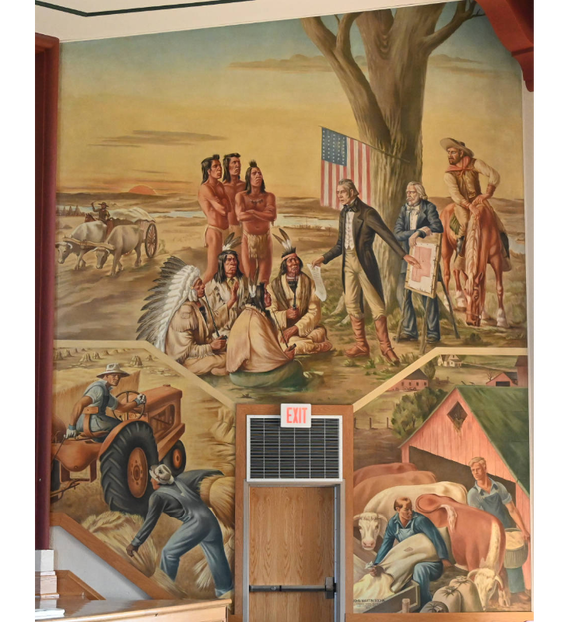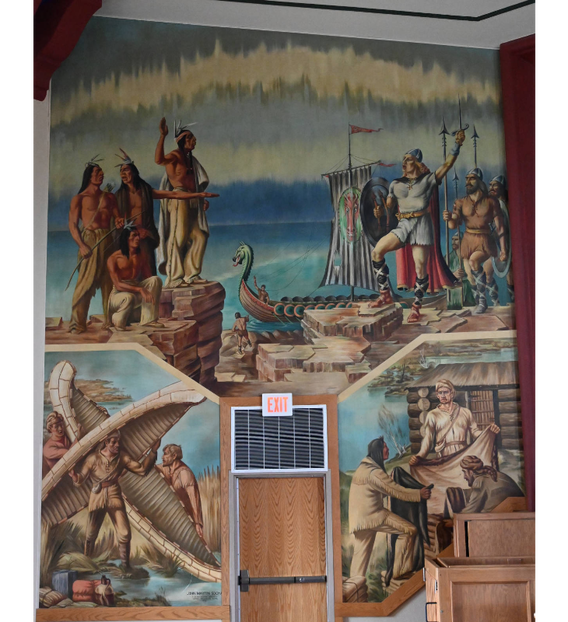
Works Progress Administration (WPA) Kiehle Murals

During the Great Depression, the United States Federal Art Project, (1935-42) part of the larger Works Progress Administration, provided employment to thousands of artists. Minnesota’s John Martin Socha, being paid a “plumber’s wage,” was commissioned to paint several murals in Minnesota including those in the Kiehle Auditorium of what was then part of the Northwest School of Agriculture (NWSA). The NWSA Class of 1932, who donated funds for the art materials, presented the murals to the school at the annual Parent’s Day program held on Saturday, November 7, 1942.
Left Panel
The large panel depicts a new era that seems to read as a moment of inevitability and Manifest Destiny. This panel includes the ox-cart trade, Minnesota's historical period of cessation of lands of Native peoples with the US Government. The lower left panel depicts cultivation and the vast land and agrarian settlement and productivity. The lower right hand panel is filled with activity, productivity, and surplus, with domestic cattle and troughs, farmers feeding their livestock, grain bins overflowing, and barns and houses in the background.
Full Description Audio (Left Panel):
Right Panel

The large panel depicts the origins of American history with the arrival of the Vikings to North America and their encounters with Native people. The smaller panel on the left shows French fur-traders and voyageurs in the 17th century. The smaller panel on the right is of an early 19th century European-American homestead.
Full Description Audio (Right Panel):